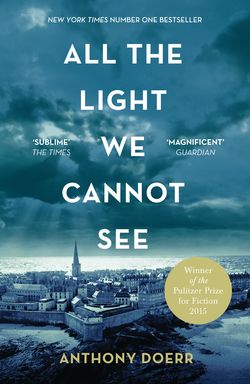Читать книгу All the Light We Cannot See - Anthony Doerr, Anthony Doerr - Страница 27
Sea of Flames
ОглавлениеRumors circulate through the Paris museum, moving fast, as quick and brightly colored as scarves. The museum is considering displaying a certain gemstone, a jewel more valuable than anything else in all the collections.
“Word has it,” Marie-Laure overhears one taxidermist telling another, “the stone is from Japan, it’s very ancient, it belonged to a shogun in the eleventh century.”
“I hear,” the other says, “it came out of our own vaults. That it’s been here all along, but for some legal reason we weren’t allowed to show it.” One day it’s a cluster of rare magnesium hydroxy carbonate; the next it’s a star sapphire that will set a man’s hand on fire if he touches it. Then it becomes a diamond, definitely a diamond. Some people call it the Shepherd’s Stone, others call it the Khon-Ma, but soon enough everyone is calling it the Sea of Flames.
Marie-Laure thinks: Four years have passed.
“Evil,” says a warder in the guard station. “Brings sorrow on anyone who carries it. I heard all nine previous owners have committed suicide.”
A second voice says, “I heard that anyone who holds it in his ungloved hand dies within a week.”
“No, no, if you hold it, you cannot die, but the people around you die within a month. Or maybe it’s a year.”
“I better get my hands on that!” says a third, laughing.
Marie-Laure’s heart races. Ten years old, and onto the black screen of her imagination she can project anything: a sailing yacht, a sword battle, a Colosseum seething with color. She has read Around the World in Eighty Days until the Braille is soft and fraying; for this year’s birthday, her father has bought her an even fatter book: Dumas’s The Three Musketeers.
Marie-Laure hears that the diamond is pale green and as big as a coat button. Then she hears it’s as big as a matchbook. A day later it’s blue and as big as a baby’s fist. She envisions an angry goddess stalking the halls, sending curses through the galleries like poison clouds. Her father says to tamp down her imagination. Stones are just stones and rain is just rain and misfortune is just bad luck. Some things are simply more rare than others, and that’s why there are locks.
“But, Papa, do you believe it’s real?”
“The diamond or the curse?”
“Both. Either.”
“They’re just stories, Marie.”
And yet whenever anything goes wrong, the staff whispers that the diamond has caused it. The electricity fails for an hour: it’s the diamond. A leaky pipe destroys an entire rack of pressed botanical samples: it’s the diamond. When the director’s wife slips on ice in the Place des Vosges and breaks her wrist in two places, the museum’s gossip machine explodes.
Around this time, Marie-Laure’s father is summoned upstairs to the director’s office. He’s there for two hours. When else in her memory has her father been called to the director’s office for a two-hour meeting? Not once.
Almost immediately afterward, her father begins working deep within the Gallery of Mineralogy. For weeks he wheels carts loaded with various pieces of equipment in and out of the key pound, working long after the museum has closed, and every night he returns to the key pound smelling of brazing alloy and sawdust. Each time she asks to accompany him, he demurs. It would be best, he says, if she stayed in the key pound with her Braille workbooks, or upstairs in the mollusk laboratory.
She pesters him at breakfast. “You’re building a special case to display that diamond. Some kind of transparent safe.”
Her father lights a cigarette. “Please get your book, Marie. Time to go.”
Dr. Geffard’s answers are hardly better. “You know how diamonds—how all crystals—grow, Laurette? By adding microscopic layers, a few thousand atoms every month, each atop the next. Millennia after millennia. That’s how stories accumulate too. All the old stones accumulate stories. That little rock you’re so curious about may have seen Alaric sack Rome; it may have glittered in the eyes of Pharaohs. Scythian queens might have danced all night wearing it. Wars might have been fought over it.”
“Papa says curses are only stories cooked up to deter thieves. He says there are sixty-five million specimens in this place, and if you have the right teacher, each can be as interesting as the last.”
“Still,” he says, “certain things compel people. Pearls, for example, and sinistral shells, shells with a left-handed opening. Even the best scientists feel the urge now and then to put something in a pocket. That something so small could be so beautiful. Worth so much. Only the strongest people can turn away from feelings like that.”
They are quiet a moment.
Marie-Laure says, “I heard that the diamond is like a piece of light from the original world. Before it fell. A piece of light rained to earth from God.”
“You want to know what it looks like. That’s why you’re so curious.”
She rolls a murex in her hands. Holds it to her ear. Ten thousand drawers, ten thousand whispers inside ten thousand shells.
“No,” she says. “I want to believe that Papa hasn’t been anywhere near it.”
